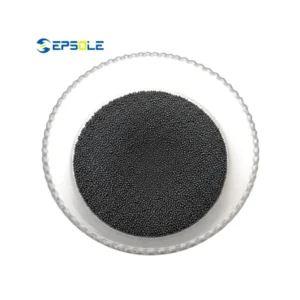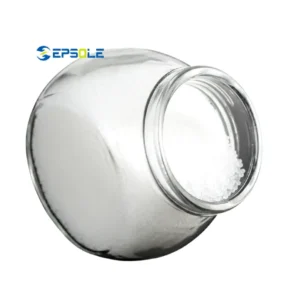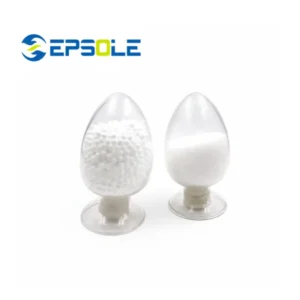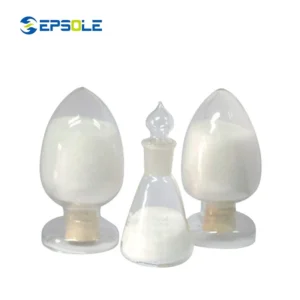Proper storage of EPS (Expanded Polystyrene) raw materials is crucial for maintaining their quality and ensuring efficient production. Improper handling can lead to various issues, including compromised expandability, increased waste, and reduced final product performance. This guide will outline essential best practices to help you protect your investment and optimize your manufacturing process.
Understanding the unique properties of EPS beads is key to effective storage. Factors such as temperature, humidity, and potential contaminants can significantly impact the material’s integrity. By implementing the correct storage protocols, you can prevent common problems and ensure your EPS raw materials are always in prime condition for processing.
What is EPS Raw Material?
EPS raw material, or Expandable Polystyrene, is a versatile and lightweight plastic material supplied in the form of small, hard beads. These EPS beads are primarily composed of polystyrene, a synthetic polymer derived from petroleum, and contain a blowing agent, typically pentane. When exposed to steam, the pentane expands, causing the polystyrene beads to expand significantly (up to 50 times their original volume) and fuse together.
This process creates a lightweight foam material with a closed-cell structure, trapping a large amount of air within, which gives EPS its excellent insulating and shock-absorbing properties.
- Additives: Depending on the desired properties, flame retardants, colorants, or other fillers may also be present in small quantities.
- Polystyrene: The base polymer that forms the solid structure of the beads.
- Blowing Agent (Pentane): A volatile hydrocarbon that, when heated by steam, vaporizes and causes the polystyrene to expand.
How to Store EPS Raw Material?
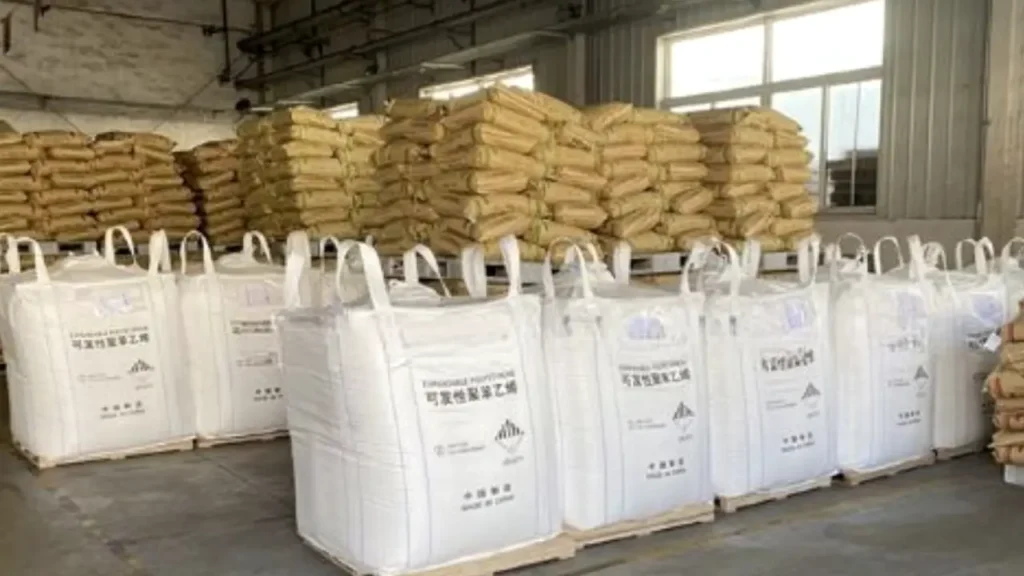
Proper storage of EPS raw materials is not merely a recommendation; it is a critical operational imperative for any facility utilizing this versatile polymer. The integrity of your final EPS products, from insulation boards to protective packaging, hinges directly on how effectively you preserve the initial properties of the raw beads. Neglecting proper storage protocols can lead to substantial financial losses due to wasted material, compromised product quality, and increased production challenges.
This comprehensive guide details the essential steps to ensure your EPS raw materials remain in optimal condition, ready for processing.
Control Temperature and Humidity
Maintaining a strictly controlled environment is paramount for the longevity and performance of EPS beads. These materials are inherently sensitive to temperature fluctuations, particularly elevated temperatures. High heat can prematurely activate the blowing agent (typically pentane) encapsulated within the beads, causing them to begin expanding before they even reach the pre-expander.
This “pre-expansion” reduces the material’s potential for further expansion during the actual manufacturing process, leading to lower density products than intended, increased material consumption for a given volume, and ultimately, higher production costs. Therefore, storage areas must be kept consistently cool, ideally below 25°C (77°F), to prevent this undesirable early activation.
Beyond temperature, humidity is another critical factor that demands stringent control. EPS beads are hygroscopic to some degree, meaning they can absorb moisture from the surrounding air. Excessive moisture absorption can severely compromise the material’s processing characteristics.
During the pre-expansion phase, absorbed moisture can interfere with the steam transfer, leading to uneven expansion, clumping of beads, and inconsistent density profiles. Furthermore, it can increase the risk of static electricity buildup, posing operational challenges. Consequently, storage facilities must be equipped with effective dehumidification systems or located in naturally dry environments, maintaining relative humidity levels below 60% to safeguard the bead’s integrity and ensure smooth processing.
Keep in Original Packaging
The packaging in which EPS raw materials are supplied is specifically engineered to protect the beads from a myriad of external threats. These specialized bags, often made of multi-layered polypropylene or polyethylene, are designed not only to contain the beads but also to provide crucial barriers against moisture ingress, UV radiation, and physical contamination.
Many contemporary EPS bags incorporate features such as internal liners or breathable membranes that allow for the gradual release of residual blowing agent (a natural process known as aging) while simultaneously preventing the entry of external moisture or dust.
Therefore, it is unequivocally recommended that EPS raw materials remain in their original, sealed packaging for as long as possible, ideally until they are immediately required for processing. Breaking the seal or transferring beads to alternative, non-specialized containers prematurely exposes the material to environmental stressors such as atmospheric oxygen, humidity, and airborne contaminants.
This premature exposure can accelerate the loss of the blowing agent, introduce impurities that compromise the final product’s quality, or lead to unwanted moisture absorption, all of which directly impact the material’s expandability and the subsequent quality of the molded product. Adhering to this practice ensures the beads retain their factory-fresh properties, optimizing their performance in your production line.
Avoid Direct Sunlight
Direct exposure to sunlight represents a significant threat to the quality and longevity of EPS raw materials. The primary culprit is ultraviolet (UV) radiation present in sunlight. UV rays are known to induce photo-degradation in polymers like polystyrene, causing a breakdown of the molecular chains. This degradation manifests visibly as yellowing of the beads, but more importantly, it leads to a reduction in the material’s mechanical strength and overall performance once processed into a foam product. Degraded beads may produce brittle, weak, or discolored finished goods that fail to meet specifications.
Furthermore, direct sunlight inevitably leads to a substantial increase in the ambient temperature of the EPS beads. As discussed previously, elevated temperatures accelerate the premature expansion of the blowing agent, severely impacting the material’s subsequent expansion ratio and final density.
Storing EPS raw materials in a dedicated warehouse or a shaded area, completely isolated from direct sunlight and even strong artificial lighting that emits UV, is therefore non-negotiable. Implementing proper shading, using opaque storage containers, or designing warehouse layouts that minimize light exposure are crucial steps in preserving the material’s inherent quality and ensuring consistent product output.
Prevent Contamination
The purity of EPS raw materials is paramount to achieving high-quality, defect-free final products. EPS beads are highly susceptible to contamination from a wide array of foreign particles, including dust, dirt, fibers, small debris, or even residues from other materials handled in the same facility.
Even minute quantities of these contaminants can have disproportionately negative impacts on the end product. Contaminants can act as nucleation sites for voids, weaken the foam structure, cause surface imperfections, or lead to discoloration, making the finished goods unusable or requiring costly rework.
To mitigate this risk, maintaining an immaculate storage environment is essential. Storage areas should be regularly cleaned, swept, and kept free from any accumulated dust or debris. It is also crucial to ensure that the EPS bags remain sealed and are stored well away from open containers of other raw materials, chemicals, or processing waste that could inadvertently introduce contaminants. Implementing strict material handling protocols, such as dedicated clean zones for storage and using clean equipment for transport, will significantly reduce the risk of contamination. A pristine storage environment directly translates to a purer, more consistent EPS foam product, enhancing both quality and operational efficiency.
Where You Can Store EPS Raw Materials?
EPS raw material should ideally be stored in a dedicated, controlled environment designed to protect its sensitive properties. A well-ventilated, indoor warehouse or storage facility is generally the most suitable location.
This provides protection from direct sunlight, extreme temperatures, and precipitation. Given that EPS contains a flammable blowing agent (pentane), it’s also crucial that the storage area is away from any ignition sources and that appropriate fire safety measures are in place.
- Fire Safety Measures: Should be equipped with appropriate fire extinguishers, possibly sprinkler systems for larger quantities, and clear access for emergency services.
- Dedicated Warehouse/Indoor Facility: Provides controlled conditions, protecting from weather, UV radiation, and temperature extremes.
- Well-Ventilated Area: Essential for dissipating the small amounts of pentane blowing agent that may naturally evolve from the beads, preventing accumulation of flammable vapors.
- Dry Environment: Crucial to prevent moisture absorption, which can negatively impact the material’s expandability and processing.
- Away from Ignition Sources: Strict adherence to “no smoking” policies, elimination of open flames, sparks, and static electricity sources is critical due to the presence of flammable pentane.
- Ground Level and Level Surface: For ease of handling and to prevent accidental spills or damage to packaging.
Ideal Temperature Range for Storing EPS Raw Material
The ideal temperature range for storing EPS raw material is below 25°C (77°F). Maintaining temperatures consistently below this threshold is critical because EPS beads contain a blowing agent, typically pentane, which is sensitive to heat.
Elevated temperatures can cause this blowing agent to prematurely expand, leading to a loss of the material’s latent expandability and ultimately resulting in lower-density, poorer-quality final products. While EPS itself can withstand a wider range of temperatures once processed into foam, the raw beads require specific environmental control to preserve their chemical and physical properties before manufacturing.
- Avoid Extreme Heat: Temperatures approaching or exceeding 30°C (86°F) can significantly degrade the material’s performance.
- Below 25°C (77°F): This range is recommended to prevent premature expansion of the pentane blowing agent.
- Cool and Stable: Consistency is key; avoid drastic temperature fluctuations that could stress the material.
Conclusion
Effective storage of EPS raw materials is an investment that pays dividends in product quality, operational efficiency, and cost savings. By adhering to the guidelines on temperature control, humidity management, and proper packaging, you safeguard the material’s expandability and prevent common issues that can derail your production. Prioritizing correct storage practices ensures your EPS beads are always ready for optimal performance.
Implementing these storage strategies not only preserves the intrinsic properties of your EPS but also contributes to a safer and more organized working environment. Minimizing material degradation and waste directly impacts your bottom line, demonstrating the tangible benefits of a well-executed storage plan. Remember, the longevity and quality of your final EPS products begin with how you handle the raw materials.
For businesses seeking reliable and high-quality EPS raw materials, consider Epsole. We offer a wide range of wholesale EPS raw materials, manufactured and handled with stringent quality controls to ensure they arrive at your facility in perfect condition. Partner with Epsole for your EPS needs and experience the difference that quality materials and expert support can make.

